Why Do Marmots Scream? Understanding the Meaning and Function of Marmot Vocalizations
Marmots can produce different types of sounds of different frequencies. They do not create noise or repeatedly produce noise without any reason.
So, why do marmots scream? They mainly use screams to warn their colony. Around 30 marmots are housed close together in a cluster of burrows. They come out to collect food. Among them, 2 or 3 of them keep patrolling and whistling.
This sound helps to connect them to their colony. If any scream or loud whistle is heard, that means the predator is nearby. That’s not the end. You can get a detailed discussion about different vocalizations of marmot and the reason behind the sound.
Marmot Vocalizations
Marmots are ground squirrels seen producing different vocalizations. All the sounds are almost similar. But you can differentiate the sounds by loudness.

Sometimes one vocalization seems to be used in different situations. Like they use the same tone both for communication and for alarming their fellows from some specific predators.
Also, they not only use vocalization but also use visual and olfactory signs to communicate and warn. Thus, why do they scream, whistles and chirps are given below.
Chirps
When you are roaming around the wildlife, the most common sound you hear from the marmot is chirping. Their chirping sounds are similar to the birds chirping.
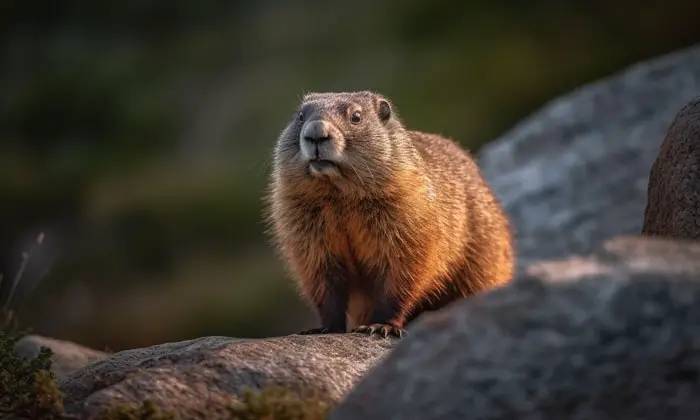
For predator avoidance, they keep chirping among them. They also use this vocalization for communication with their kin. But this sound gradually increases and converts into another sound tone.
This sound can be called a marmot alarm call when seeing any non-mammalian predator, mainly the avian predator at a distance.
Whistles
Whistling is a part of marmots’ mammal behavior. Often one elderly member is seen to be taking care of his family. It keeps an eye on every member and keeps whistling when they go far from their burrows. The elder one keeps whistling when the younger one moves away in the blink of an eye.
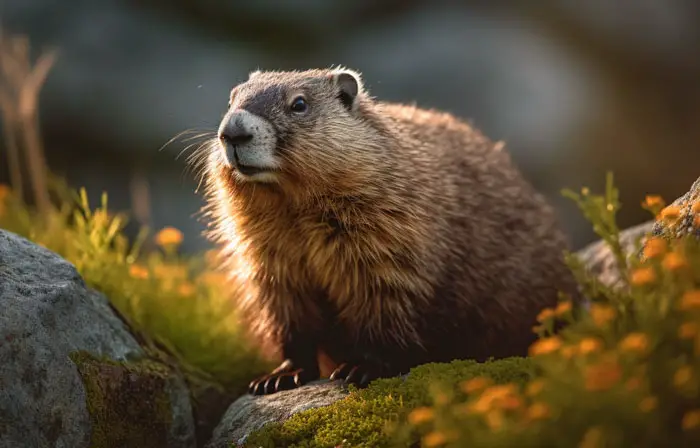
Whistling is a sign for young marmot warning calls. The young ones can come back to their burrows by following the sound.
Some marmot species like the Hoary marmot, whistle when the mammal predators are around. Mainly when they feel threatened by the foxes and coyotes, they use this vocalization. They whistle twice if they see any four-legged predator.
Screams
Marmots scream when they are in extreme fear or the predator is ready to attack them. This scream can be compared to a human scream. It keeps chirping and that becomes a one-time louder call when the danger is closer to them. It can be called marmot communication for danger.
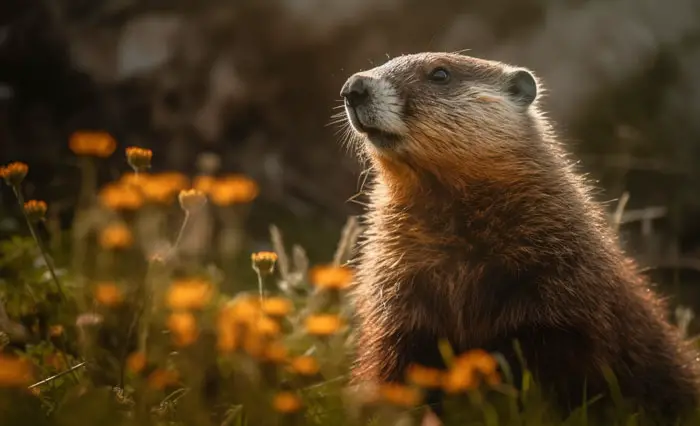
This sound is an ultimatum for its kin and the last voice before the predator catches one. Also, they can scream without seeing any predators. If anyone suddenly attacks or if they get scared, you may hear this sound.
Likewise, you may find people asking why do marmots scream at night. It is not a usual thing and also not for the avian predators. It is often seen that the snake and reptile predators come out hunting at night. If they see the hunters nearby and get frightened, they scream.
Producing noise is a natural behavior of ground squirrels. They are either seen chirping all the time like a bird or whistling.
Effect Of Seasonal Change In Marmot Vocalization And Social Behavior
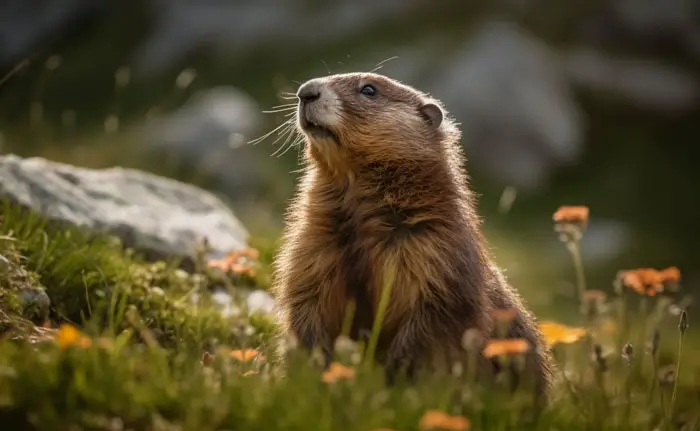
Marmots are seen to follow social behavior according to the seasons.
- They stay in their burrows for eight months, including the winter season. It is their hibernation period. So, you can not see them whistling, chirping, or screaming in the hibernation period.
- They come out from their burrows in April or May and follow their wildlife behavior like other animals. Thus, they start communicating with different noises and keep their members alert from prey.
- Also, they can be seen getting alert when they hear rodents scream. They keep chirping to get attached and to communicate. The sound turns into whistles when they want to alert others while remaining within a certain distance.
- Finally, it turns into a scream when they face measurable conditions.
Marmot vocalization meanings can be described in this manner. Vocalization is only seen when they are out of their burrows.
Functions of Marmot Vocalizations
Marmot vocalizations can be divided according to territoriality. The yellow-bellied marmots can produce only three types of sound.
On the other hand, Groundhogs, which are known as whistle-pigs, can produce 25 different types of voices. They use one sound for different purposes. Also, more than one sound can be seen to be used for the same purpose.
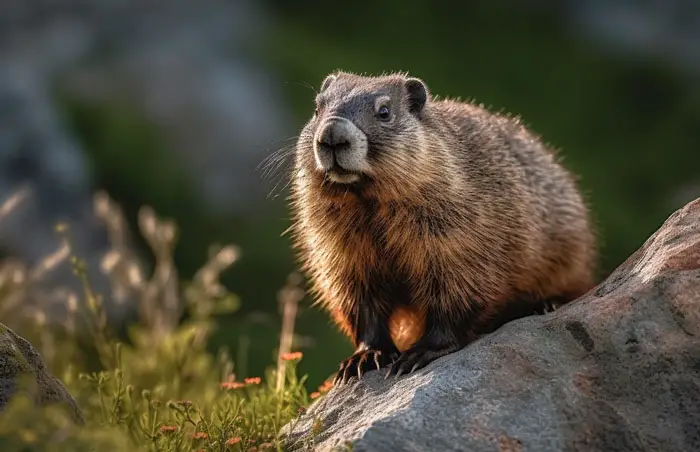
They even produce sounds to show aggression. For example, they can hiss, growl, and squeal. However, some functions are common for all types of marmots. They are
- For predator avoidance
- Communication
Marmot uses all the vocalization for communicating between themselves. But the meanings can vary in different situations. They also communicate with other animals, like rodents and squirrels, by chirping or by body movement.
If you’re interested in learning more about the behavior of marmots and their unique adaptations, Rodents Fact has got you covered. Our articles on do marmots bite and do marmots climb trees are informative and engaging reads. In our article on do marmots bite, we explore the biting behavior of these rodents, the reasons behind it, and how to prevent marmot bites. Meanwhile, our article on do marmots climb trees delves into the interesting adaptation of some marmot species to climb trees and the benefits that it offers. So, whether you’re interested in the biting behavior of marmots or the unique adaptations of these rodents, be sure to check out our articles on do marmots bite and do marmots climb trees.FAQs
These are some commonly asked questions by people about marmot vocalization.
Q: Do all marmot species scream?
Yes. All marmot species scream when they get frightened or the danger is nearby. Although it is not commonly seen. Sometimes they get too short a time to scream or they may remain silent for their safety.
Q: Can humans understand marmot vocalizations?
It is difficult for a human to understand marmot vocalization. Because they use one voice for different purposes. Also, they use different voices for the same purpose.
Conclusion
Marmots use their vocalization mainly to communicate, keep their kin alert, or warn them that a predator is coming. Otherwise, they can produce noise for a different purpose. It is sometimes seen fighting and producing a voice to show aggression. One type of voice is not fixed for one purpose.
Similarly, they sometimes communicate without producing any voice. There is a difference in marmots’ vocalization according to their species and territory.
For further research, you have to observe how they react when the predator is nearby and when they communicate. Also, why they keep chirping among them when they are free from any danger should be observed.





